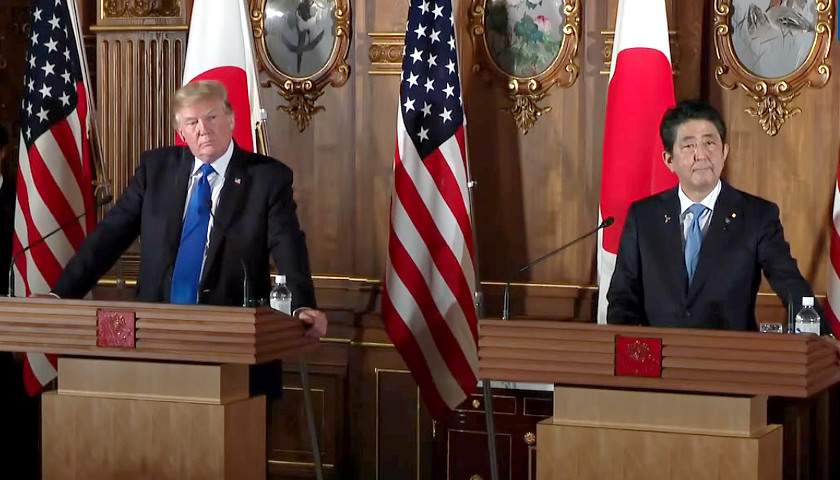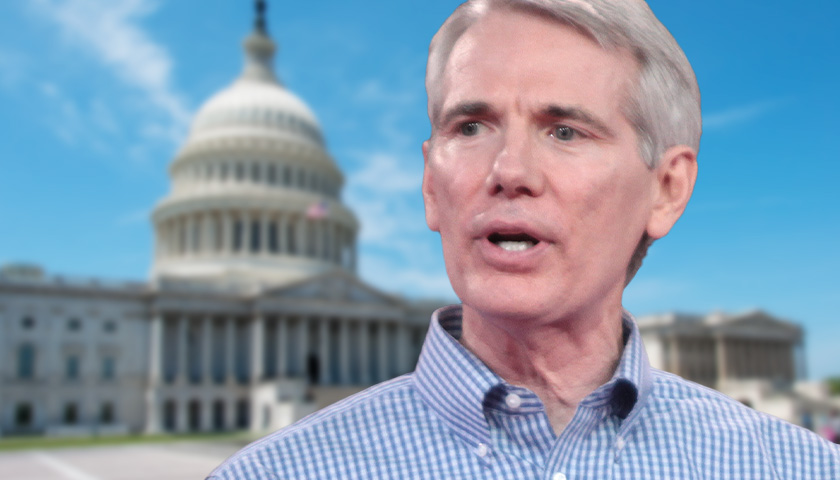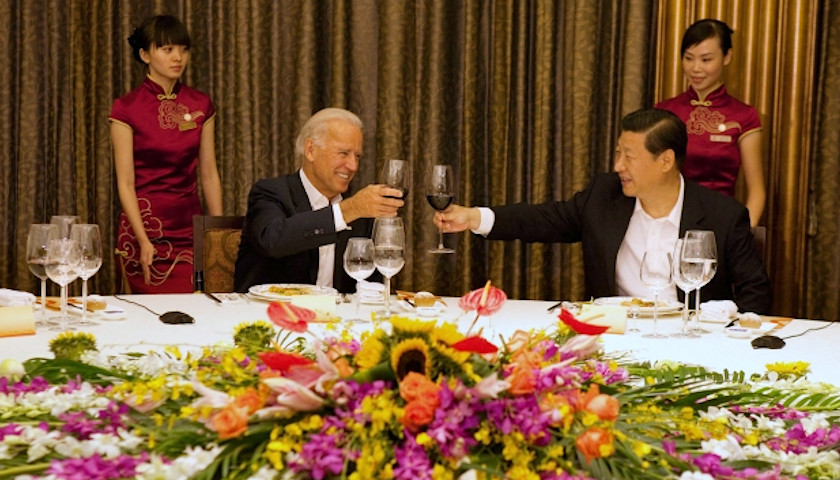By Robert Romano
President Donald Trump is back to the issue that got him elected more than any other and transformed the U.S. electoral map in 2016, and that is rejecting the 11-nation Trans-Pacific Partnership trade deal that had been proposed by former President Barack Obama.
On Twitter on April 17, Trump appeared to rule out the TPP once and for all: “While Japan and South Korea would like us to go back into TPP, I don’t like the deal for the United States. Too many contingencies and no way to get out if it doesn’t work. Bilateral deals are far more efficient, profitable and better for OUR workers. Look how bad WTO is to U.S.”
That had followed a turbulent week for the President as he toyed with the idea of getting back into the TPP. Bloomberg had reported on April 12 that “Two White House officials who spoke on condition of anonymity confirmed that the president directed economic adviser Larry Kudlow and U.S. Trade Representative Robert Lighthizer to explore the feasibility of re-entering the TPP.”
The President then confirmed his thinking on Twitter on April 12 that he was open to a new deal, but offered certain provisos: “Would only join TPP if the deal were substantially better than the deal offered to Pres. Obama. We already have BILATERAL deals with six of the eleven nations in TPP, and are working to make a deal with the biggest of those nations, Japan, who has hit us hard on trade for years!”
Upon hearing the reports, Americans for Limited Government President Rick Manning warned via a statement that reentering the TPP would be bad for the American economy and bad for Trump politically, saying, “President Donald Trump made it clear well before his candidacy in 2015 that he opposed the Trans-Pacific Partnership, calling it a bad, bad deal. One of his first acts as President was to withdraw from the TPP to the applause of the American people because it did not put America first. The White House’s reported reconsideration of this withdrawal would be a disaster both for our nation and for President Trump, who won the election promising to get out of this deal. This sovereignty-killing globalist dream pact embodies everything that the President has opposed throughout his political life, and there is simply no margin to reenter it.”
For Manning, the TPP was something akin to a third rail for the President. Fighting against it and other bad trade deals like NAFTA and the World Trade Organization had helped Trump cement his Electoral College majority in the Rust Belt states of Ohio, Pennsylvania, Michigan and Wisconsin in 2016.
It was an issue that proved popular in the 2016 GOP nominating contest, revealing a Republican electorate that was with Trump on trade, surprising many political observers and most of all, Trump’s Republican opponents in the primary.
Against Hillary Clinton, the issue helped bring on board union households, reuniting the coalition that helped Ronald Reagan win in the 1980s.
It was Trump’s vision that got him elected, but suddenly, with the reports on being open to a new TPP, it was all up in the air.
Fortunately, by April 17, just prior to meeting with Japanese Prime Minister Shinzo Abe at Mar-a-Lago, Fla., Trump had popped the trial balloon completely. Apparently, navigating and reorienting the 11-nation trade agreement was not as feasible as it might appear at first glance. Or perhaps it just all Trump’s art of the deal.
So far, Japan has not been granted any exceptions to the President’s steel and aluminum tariffs and now another new trade agreement could be at hand. At a working lunch with Abe on April 19, Trump said, “the word ‘reciprocal’ will be the primary word that we’re going to be using. And we use that with every nation now, because the United States has not been properly led on trade. Our people have let us down. Whether it’s our Presidents or our representatives, they’ve let us down. So free, fair, and reciprocal. And I think we’ve all agreed to that. And that’s just very important.” Later at a joint press conference, Abe agreed that he and Trump had agreed to begin talks on “free, fair and reciprocal trade deals” between the two countries on a bilateral basis.
On TPP, Trump said, ‘“I like bilateral better, I think it’s better for our country, I think it’s better for our workers. I would much prefer a bilateral deal, a deal directly with Japan.” And that’s what they’re working on.
Trump said he likes to remain “flexible,” of course — again, the art of the deal — and so finally offered, “Unless they offer us a deal that we cannot refuse, I would not go back into TPP.” Which won’t happen. The TPP had been in negotiations since 2005. By the time all 11 nations got a new agreement together to try to make another offer to the U.S. on a multinational basis, Trump would in all likelihood already be out of office.
Meaning, the U.S. is out of the TPP for good, and we can thank President Trump. Going forward, this should give the Trump administration far more leverage in getting deals out of Japan on a bilateral basis, Mexico and Canada via NAFTA renegotiation and China via the World Trade Organization. Same deal with the Paris climate accord. Or the Iran nuclear deal.
If the President believes these agreements do not put America first, he will kill them.
That is the Trump card. The President can, as he has just done, unilaterally leave NAFTA, the WTO, Iran, or any other bad deal, just like he did the TPP and Paris. Food for thought. Trump isn’t bluffing. He’ll actually do it.
Don’t doubt him.
– – –
Robert Romano is the Vice President of Public Policy at Americans for Limited Government.




MAGA!
Chalk up another win for the American people.